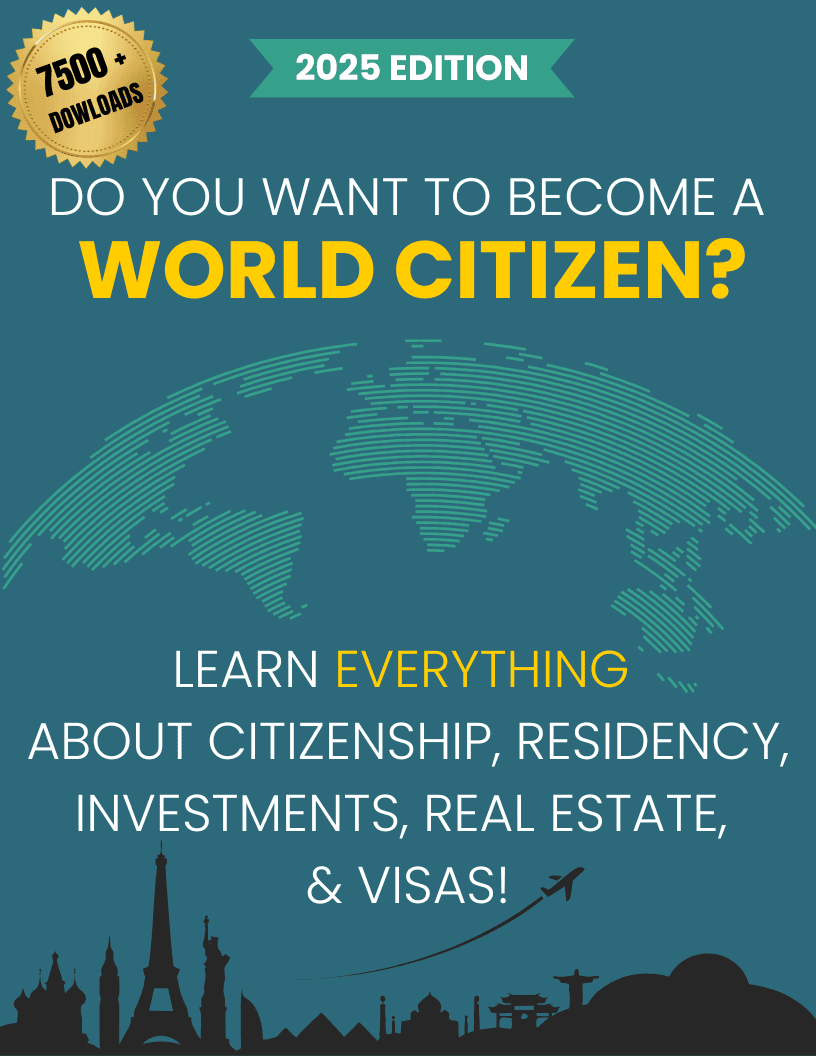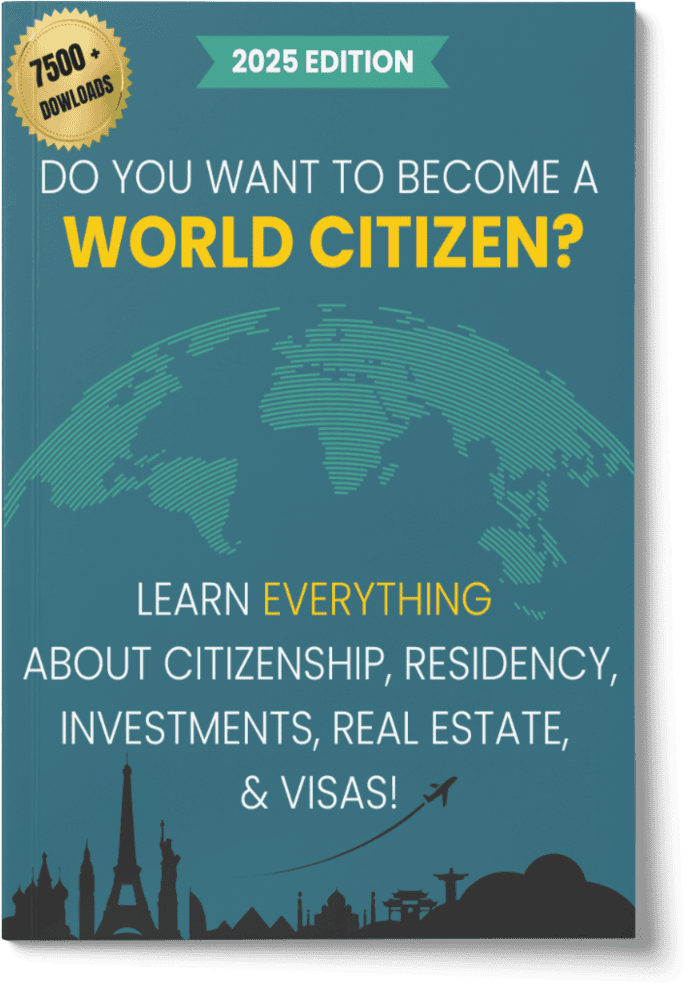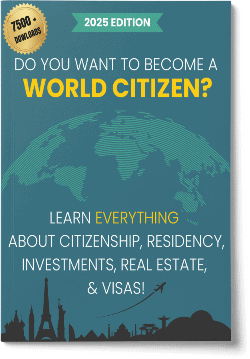Boost Your Freedom Without Compromise.
- Who offers the CHEAPEST program available.
- Who offers the BEST program available.
- What you need to qualify?

Key Takeaways
- Discover the diverse range of employment-based visa options available in Australia
- Understand the eligibility requirements and application process for each visa category
- Learn strategies to maximize your chances of securing a successful visa application
- Explore the pathways to permanent residency and long-term settlement in Australia
- Gain insights from industry experts on navigating the complex immigration system
Are you dreaming of a career in the land down under?
Look no further than Australia's robust employment-based visa programs, which offer a world of opportunities for skilled professionals seeking to live and work in this vibrant country.
But where do you even begin navigating the complex visa landscape? Fear not, this comprehensive guide is your key to unlocking the secrets of Australian work visas and turning your dreams into reality.
Whether you're a seasoned expert in your field or a rising talent, Australia's employment-based visa options cater to a wide range of skill sets and experience levels.
In This Article, You Will Discover:
From temporary work permits to pathways to permanent residency, this guide will explore the ins and outs of the visa application process, helping you identify the best fit for your unique situation.
- Who offers the CHEAPEST program available.
- Who offers the BEST program available.
- What you need to qualify?
 Free Consultation
Free Consultation Easy to Use
Easy to Use 100% Safe & Secure
100% Safe & Secure
Exploring Australia's Employment-Based Visa Options
Australia's immigration system offers a diverse range of employment-based visa options to cater to the needs of international professionals.
Whether you're seeking temporary or permanent residency, there are pathways tailored to your skillset and career aspirations.
Skilled Visa Streams for Professionals
The Australian government recognizes the value of skilled workers across various industries.
Through the skilled visa program, professionals can apply for visas such as the Skilled Independent Visa (subclass 189), Skilled Nominated Visa (subclass 190), or Skilled Work Regional (Provisional) Visa (subclass 491).
These visas are designed to attract talented individuals with in-demand skills, providing a pathway to Australia permanent residency.
Temporary and Permanent Residency Pathways
In addition to skilled visas, Australia offers employment-based temporary and permanent residency options.
The Temporary Skill Shortage Visa (subclass 482) allows employers to sponsor foreign workers for short-term roles, while the Employer Nomination Scheme (subclass 186) and Regional Sponsored Migration Scheme (subclass 187) provide opportunities for permanent sponsored visa australia.
These pathways cater to a diverse range of occupations and skill levels, making Australia an attractive destination for australia immigration.
| Visa Type | Eligibility | Residence |
|---|---|---|
| Skilled Independent Visa (subclass 189) | Points-based system, no sponsorship required | Permanent Residency |
| Skilled Nominated Visa (subclass 190) | Points-based system, state/territory sponsorship | Permanent Residency |
| Skilled Work Regional (Provisional) Visa (subclass 491) | Points-based system, regional sponsorship | Temporary Residency (with a pathway to Permanent Residency) |
| Temporary Skill Shortage Visa (subclass 482) | Employer sponsorship, specific occupation list | Temporary Residency |
| Employer Nomination Scheme (subclass 186) | Employer sponsorship, skills assessment | Permanent Residency |
| Regional Sponsored Migration Scheme (subclass 187) | Employer sponsorship, regional area | Permanent Residency |
Navigating the complexities of Australia's employment-based visa options can be a daunting task.
Seeking professional guidance can help you identify the most suitable pathway and increase your chances of a successful application.
Skilled Nominated Visa: Eligibility and Requirements
The Skilled Nominated Visa (subclass 190) is a permanent residency pathway that offers skilled professionals an opportunity to call Australia home.
This visa option requires sponsorship from a state or territory government, and understanding the eligibility criteria is crucial for a successful application.
To be eligible for the Skilled Nominated Visa, applicants must possess in-demand skills and qualifications that align with the Australian labor market.
This includes meeting minimum education, work experience, and English language proficiency requirements.
- Education: Applicants must have a skills assessment that confirms their qualifications are equivalent to the Australian standard for their nominated occupation.
- Work Experience: A minimum of 3 years of relevant work experience in the nominated occupation is typically required.
- English Proficiency: Applicants must demonstrate a competent level of English language skills, with a minimum score of 6.0 in each band of the International English Language Testing System (IELTS) or an equivalent test.
In addition to these core requirements, the Skilled Nominated Visa is a points-based system, where applicants must score a minimum of 60 points.
Points are awarded based on factors such as age, work experience, qualifications, and the state or territory that is offering sponsorship.
| Criteria | Points |
|---|---|
| Age (under 45 years old) | 15-30 points |
| Skilled Work Experience | 0-20 points |
| Qualifications | 10-20 points |
| State/Territory Sponsorship | 15 points |
The Skilled Nominated Visa is a highly sought-after pathway for skilled professionals looking to skilled visa australia and australia immigration.
By understanding the eligibility criteria and requirements, applicants can enhance their chances of successfully obtaining this permanent residency visa.
Employer Nomination Scheme: Securing Job Offers
The Employer Nomination Scheme (subclass 186) is a permanent residency visa that offers a direct path to living and working in Australia.
This valuable program requires a job offer and sponsorship from an eligible Australian employer, making it an attractive option for skilled professionals seeking to establish a long-term career in the country.
Understanding the Sponsorship Process
Navigating the employer sponsorship process can seem daunting, but we're here to guide you through the steps.
Employers must first assess your qualifications and skills to determine if you meet the criteria for their open position.
Once you've secured a job offer, the employer will then initiate the nomination process, which includes providing evidence of your suitability for the role.
Skilled Occupation Lists and Criteria
- Employers must nominate you for an occupation that appears on the relevant skilled occupation lists, such as the Medium and Long-Term Strategic Skills List (MLTSSL) or the Short-Term Skilled Occupation List (STSOL).
- The employer must also demonstrate that they have made genuine efforts to recruit Australian citizens or permanent residents for the position before offering it to you.
- Additionally, your skills, qualifications, and work experience must align with the requirements of the nominated occupation.
By understanding the employer nomination scheme and its specific criteria, you'll be better positioned to secure a job offer and take the next step towards permanent residency in Australia.
Regional Sponsored Migration Scheme: Living Outside Major Cities
For those seeking to establish a life in regional or rural Australia, the Regional Sponsored Migration Scheme (subclass 187) offers a unique pathway to permanent residency.
This visa program targets individuals willing to live and work outside of the country's major metropolitan areas, providing an opportunity to experience the diverse landscapes and communities that exist beyond the well-trodden paths.
The Regional Sponsored Migration Scheme is designed to address labor shortages in non-metropolitan regions of Australia.
By encouraging skilled workers and their families to settle in these areas, the program aims to stimulate local economies and foster vibrant communities.
Applicants must demonstrate a commitment to residing and working in a designated regional or rural area for a minimum of 3 years, ensuring a long-term contribution to the local labor market.
To be eligible for this visa, applicants must meet a range of criteria, including:
- Securing a job offer from an approved employer in a regional or rural area
- Possessing the necessary skills and qualifications for the nominated occupation
- Meeting English language proficiency requirements
- Demonstrating strong ties to the local community
The Regional Sponsored Migration Scheme offers numerous benefits to successful applicants, including the opportunity to live and work in a unique Australian environment, access to a range of regional lifestyle amenities, and the potential for faster processing times compared to other visa pathways.
For those who embrace the adventure of exploring Australia beyond the major cities, this visa program can be a transformative experience.
Temporary Skill Shortage Visa: Bridging the Gap
For those seeking short-term employment opportunities in Australia, the Temporary Skill Shortage (TSS) visa, also known as the subclass 482 visa, offers a viable solution.
This visa is designed to address the country's labor market needs by allowing businesses to sponsor skilled foreign workers for positions they have struggled to fill domestically.
Short-Term Employment Opportunities
The TSS visa provides access to a range of temporary employment options, catering to both skilled and semi-skilled workers.
Eligible occupations span diverse industries, from information technology and healthcare to hospitality and construction.
Depending on the specific role and the sponsoring employer's needs, the visa can be granted for a period of up to four years, making it an attractive option for those seeking short-term professional experiences in Australia.
To be eligible for a TSS visa, applicants must meet a set of specific criteria, including:
- Holding a valid job offer from an approved Australian employer
- Possessing the necessary skills, qualifications, and experience for the nominated occupation
- Demonstrating English proficiency
- Passing a stringent health and character assessment
The TSS visa also offers a pathway to permanent residency for those who wish to extend their stay in Australia long-term.
By fulfilling certain requirements, such as maintaining continuous employment and demonstrating a strong commitment to the country, TSS visa holders may be eligible to apply for a permanent skilled visa.
| Key Benefits of the Temporary Skill Shortage Visa | Eligibility Criteria |
|---|---|
|
|
For those seeking to bridge the gap and capitalize on short-term employment opportunities in Australia, the Temporary Skill Shortage visa presents an attractive and accessible option.
By understanding the visa's requirements and benefits, applicants can take the first step towards realizing their professional aspirations in the land Down Under.
Australian Employment Based Visas: A Seamless Journey
Navigating the intricate landscape of Australian employment-based visas can be a complex task, but with the right guidance, the process can be streamlined and rewarding.
This section provides an overview of the key steps involved in the visa application journey, empowering you to understand the timeline, documentation requirements, and strategies for a successful outcome.
The path to securing an Australian employment-based visa often begins with identifying the right visa stream that aligns with your skills, qualifications, and career aspirations.
From skilled visas for professionals to temporary and permanent residency options, the options are diverse and tailored to meet the needs of a wide range of applicants.
Preparing for the Journey
Successful visa applicants often start by carefully researching the various visa options, understanding the eligibility criteria, and gathering the necessary documentation. This proactive approach can help streamline the application process and increase the chances of a favorable outcome.
- Review the skilled occupation lists and ensure your skills and experience match the requirements.
- Explore the sponsorship process, understanding the role of employers and the criteria for sponsorship.
- Familiarize yourself with the points-based system and identify strategies to boost your score.
Navigating the Application Process
Once you have a clear understanding of the visa requirements, the next step is to prepare a comprehensive and well-documented application.
This phase may involve gathering supporting evidence, obtaining necessary verifications, and ensuring all the required forms and documents are submitted correctly.
Throughout the application process, it's crucial to stay organized, responsive, and proactive in addressing any queries or requests from the immigration authorities.
By following the guidelines and meeting deadlines, you can increase the likelihood of a seamless and successful visa journey.
| Step | Timeline | Key Actions |
|---|---|---|
| Visa Application Submission | 4-6 months |
|
| Application Processing | 6-12 months |
|
| Visa Issuance | 2-4 weeks |
|
By understanding the key steps and timeline involved in the visa application process, you can better navigate the journey and increase your chances of a successful australia immigration or australia permanent residency outcome.
Preparing a Winning Visa Application
Securing an australia immigration or australia permanent residency visa is a crucial step for professionals seeking to work and live in Australia.
To increase your chances of success, it's essential to prepare a well-crafted and compelling visa application.
In this section, we'll delve into the specific documentation and evidence requirements for various employment-based visa categories, equipping you with the knowledge to assemble a strong application package.
Documenting Your Qualifications and Work Experience
The foundation of a successful visa application lies in providing comprehensive evidence of your professional qualifications and work experience. Be sure to include the following documentation:
- Copies of your university degrees, diplomas, or certificates
- Detailed resumes or curriculum vitae (CV) outlining your employment history
- References from previous employers or supervisors
- Proof of professional licenses or certifications, if applicable
Demonstrating Language Proficiency
Depending on the visa category, you may need to provide evidence of your English language proficiency.
This typically involves submitting test scores from recognized language assessment providers, such as IELTS or TOEFL.
Showcasing Your Skills and Attributes
In addition to your formal qualifications, you may be required to demonstrate your skills, attributes, and potential contributions to the Australian workforce. This could involve providing:
- Detailed job descriptions or role statements
- Portfolios or samples of your work
- Testimonials or letters of recommendation
- Proof of specialized training or certifications
By meticulously compiling the necessary documentation and evidence, you can present a compelling case for your eligibility and suitability for an australia immigration or australia permanent residency visa.
The Points-Based System: Boosting Your Chances
Navigating the australia immigration process can be a nuanced endeavor, but understanding the points-based system can give you a significant advantage when applying for a skilled visa australia.
This innovative approach evaluates applicants based on a comprehensive set of criteria, empowering you to strategize and maximize your chances of securing a coveted visa.
The points-based system takes into account a range of factors, including your age, educational qualifications, work experience, and language proficiency.
By carefully assessing your profile and tailoring your application accordingly, you can increase your overall points score and position yourself as a more attractive candidate.
- Age: Younger applicants typically score higher points, with a premium placed on those under 45 years old.
- Qualifications: Advanced degrees, particularly in high-demand fields, can boost your points significantly.
- Work Experience: Relevant, skilled employment history demonstrates your valuable contributions to the Australian job market.
- Language Proficiency: Fluency in English, as evidenced by high test scores, is essential for successful visa applications.
In addition to these key factors, the points-based system may also consider your partner's qualifications, your ability to meet specific occupational requirements, and your willingness to live in regional or remote areas of Australia.
By understanding the nuances of this system and strategizing your application accordingly, you can increase your chances of securing the coveted australia immigration visa.
Immigration Agencies and Professional Guidance
For those navigating the complex world of australia immigration and australia permanent residency, seeking professional guidance can be an invaluable asset.
Immigration agencies play a crucial role in guiding individuals through the intricate process of securing the right visa for their unique circumstances.
Navigating the Complex Process
The Australian immigration system can be daunting, with a myriad of visa options and ever-changing regulations.
Working with experienced immigration professionals can help streamline the process and increase the chances of a successful application.
These experts possess in-depth knowledge of the latest requirements, eligibility criteria, and documentation needed to ensure a seamless visa journey.
- Comprehensive understanding of the Australian immigration system
- Personalized guidance tailored to individual needs and goals
- Assistance with preparing a strong and compelling visa application
- Expertise in navigating complex immigration procedures and paperwork
- Advocacy and representation throughout the entire process
By entrusting your australia immigration or australia permanent residency journey to a reputable immigration agency, you can benefit from their extensive knowledge and resources, ultimately increasing your chances of a successful outcome.
Conclusion: Realizing Your Australian Dream
The journey towards obtaining an Australian employment-based visa is a remarkable opportunity to realize your dreams of living and working in this vibrant nation.
By navigating the various visa options, understanding the eligibility requirements, and crafting a winning application strategy, you can position yourself for success and embark on an exciting new chapter in your life.
Whether you're a skilled professional seeking permanent residency or a temporary worker looking to bridge the gap, Australia's employment-based visa system provides a pathway to turning your aspirations into reality.
By staying informed, leveraging professional guidance, and meeting the necessary criteria, you can unlock a world of possibilities and make your mark in this dynamic country.
As you take the next step in your australia immigration journey, remember that the road ahead may present challenges, but with perseverance and a well-planned approach, you can overcome them and achieve your australia permanent residency goals.
With the right resources and support, your dream of living and working in Australia can become a reality, and you can embark on an enriching and rewarding experience in this remarkable nation.
Common Questions
What are the different types of employment-based visas available in Australia?
Australia offers a wide range of employment-based visa options, including the Skilled Nominated Visa (subclass 190), Employer Nomination Scheme (subclass 186), Regional Sponsored Migration Scheme (subclass 187), and Temporary Skill Shortage Visa (subclass 482). Each visa category has its own unique requirements and eligibility criteria.
What is the Skilled Nominated Visa, and what are the eligibility requirements?
The Skilled Nominated Visa (subclass 190) is a permanent residency pathway that requires sponsorship from a state or territory government. Eligibility criteria include minimum skills, qualifications, and a points-based assessment considering factors like age, work experience, and language proficiency.
How does the Employer Nomination Scheme work, and what are the requirements for employers?
The Employer Nomination Scheme (subclass 186) is a permanent residency visa that requires a job offer and sponsorship from an eligible Australian employer. Employers must consider the skilled occupation lists and criteria when nominating candidates for this visa.
What is the Regional Sponsored Migration Scheme, and what are the benefits of this visa option?
The Regional Sponsored Migration Scheme (subclass 187) is a permanent residency visa that targets individuals willing to live and work in regional or rural areas of Australia. This visa pathway provides additional opportunities for those seeking to establish a life outside of major cities.
What is the Temporary Skill Shortage Visa, and what types of short-term employment opportunities does it provide?
The Temporary Skill Shortage (TSS) visa (subclass 482) is designed to address short-term skill shortages in the Australian labor market. It allows for temporary employment in a range of occupations, subject to specific eligibility criteria.
How can I maximize my chances of success in the points-based assessment for Australian employment-based visas?
The points-based system used for many Australian employment-based visas considers factors such as age, qualifications, work experience, and language proficiency. Understanding the scoring criteria and strategies for maximizing your points can significantly improve your visa prospects.
Why should I consider working with an immigration agency or professional when applying for an Australian employment-based visa?
Navigating the complex Australian immigration system can be challenging, and working with experienced professionals can be invaluable. Immigration agencies can provide guidance on the application process, help you gather the necessary documentation, and increase your chances of a successful outcome.
- Who offers the CHEAPEST program available.
- Who offers the BEST program available.
- What you need to qualify?
 Free Consultation
Free Consultation Easy to Use
Easy to Use 100% Safe & Secure
100% Safe & Secure







